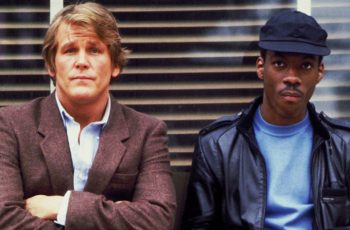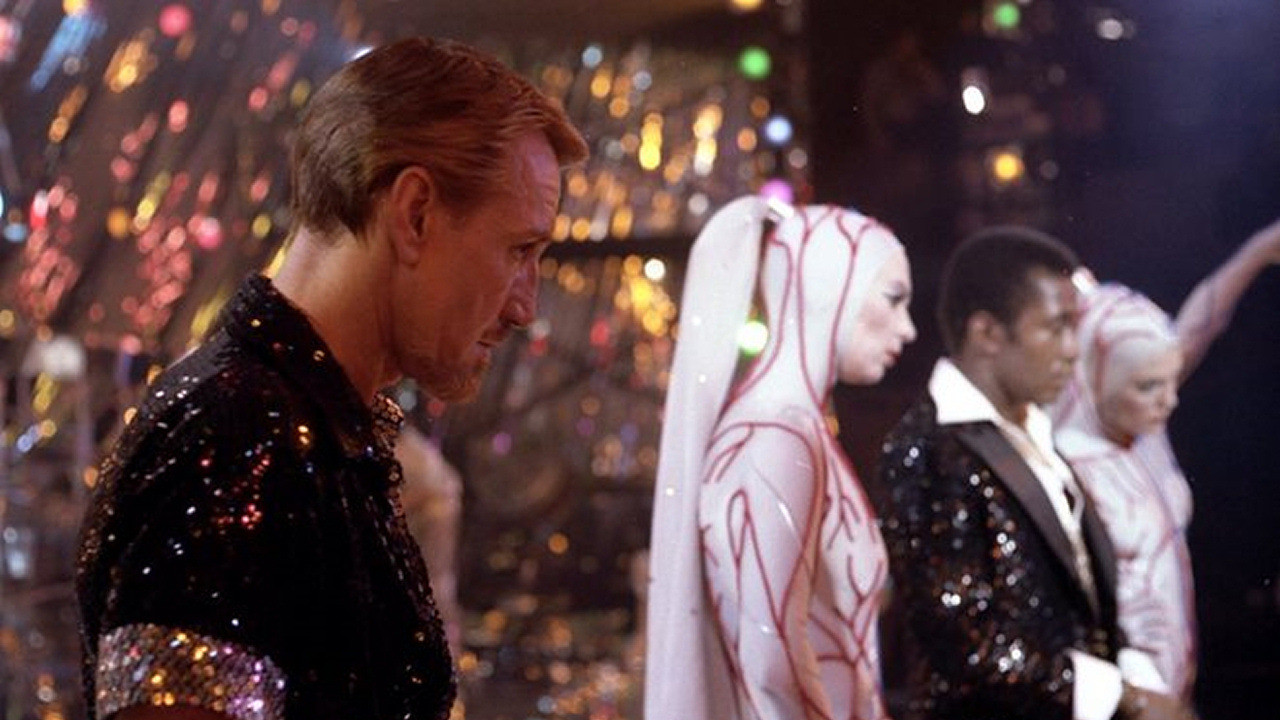“Why would my key fit into your father’s machine?”
Because I go to the movies almost every week, I see a lot of trailers. It seemed as though I watched the preview for 2011’s “Hugo” about 800 times before I finally saw the film. The thing is, when I first saw the trailer, I thought it was going to be a children’s fantasy. It looked big and colorful, with children in the main roles. Then I saw Martin Scorsese’s name as director. How could this be? Scorsese doing a children’s fantasy? Well, stranger things have happened. Didn’t he do an M. Night Shyamalan-type thriller in “Shutter Island” just the year before?
Not to worry. “Hugo” turns out not to be a children’s fantasy, even if two young actors carry much of the picture. And despite its exuberant trappings, the movie is decidedly not a fantasy. It is, in fact, an affectionate tribute to moviemaking and the movie industry, a history lesson wrapped in a valentine. And I wound up loving every minute of it.
Nevertheless, you do have to sort of get used to it as a Martin Scorsese film because it’s like nothing the man has done before. It’s probably the first time that for him a movie’s appearance dominates its content. The primary thing one notices as the movie starts is not the characters or the story but the look. Dante Ferretti’s production design is so extravagant, so elaborate, so colorful and ornate, it rather overshadows everything else, at least for the first fifteen or twenty minutes until we come to know the characters. But even then it’s hard to concentrate on them with so much going on around them.
Since the movie is a paean to motion pictures and their early creative history, Scorsese uses every facet of modern filmmaking technology to tell his story, and that means using widescreen, color, 7.1 sound, digital photography, and 3-D. Yes, he made the film in 3-D, although I resisted the urge to watch it that way in a theater. I still feel 3-D dulls a film’s color, and, besides, 3-D glasses don’t fit comfortably over my eyeglasses. Make no mistake, the regular 2-D theatrical experience was spectacular enough, and this Blu-ray edition retains much of the effect. The point is that one can see throughout the film how Scorsese uses 3-D in almost every shot, starting with a lengthy chase employing oddball camera angles and point-of-view shots at every turn. Initially, it may seem disconcerting until you remember that the director is merely showing off the technology. He does settle into more subtle uses of the process as the film goes on.
Yes, I’ll tell you in advance, the movie is sentimental; get over it. And, yes, the movie emphasizes style over substance; live with it.
Anyway, based on the book “The Invention of Hugo Cabret” by Brian Selznick, the storytellers set the film in the early 1930’s, and it recounts the exploits of a boy of twelve or thirteen years, Hugo Cabret (Asa Butterfield), who, since the death of his father (Jude Law), a clock maker, and the disappearance of his uncle (Ray Winstone), an alcoholic, has been living alone in the Montparnasse train station in Paris. He’s hidden himself out in the intricate mazes of the station’s clock towers, afraid that if anyone finds him, they’ll send him to an orphanage. In this regard, he must definitely stay out of sight from the station inspector (Sacha Baron Cohen), who was also an orphan and now delights in catching other abandoned children.
So, what’s the plot about? Actually, the story line is almost secondary to the plush tapestry of images, supporting characters, and human interest in the movie. Nevertheless, the primary narrative concerns Hugo’s attempts to restore an automaton, a mechanical man, that his father left him. The father found it at a museum for which he worked, and he decided to bring it home as a restoration project for him and his son. Hugo searches everywhere for the parts he needs and begins stealing them from an old man, George Melies (Ben Kingsley), who, with the help of his young goddaughter, Isabelle (Chloe Grace Moretz), runs a toy shop in the station When the old man catches Hugo thieving from him, the two slowly get to know one another, Melies putting Hugo to work in his shop. Hugo and Isabelle become friends, of course, and together they begin an adventure not only to rebuild the automaton with the help of a heart-shaped key but to discover the truth about the old man.
If you know anything about the history of filmmaking, you already know the truth about George Melies, and, as though it really mattered, much of what we see on screen the filmmakers adapted not only from Sleznick’s book but from real life.
The film’s magic lies in how Scorsese reveals everything. First, as I’ve said, he astonishes us with his visuals, especially the train station, a virtual city within a city, filled with shops and stalls and vendors of all sorts, continually suffused with the bustle and flow of the crowds that inhabit it. It’s quite a marvel to behold, as are the romanticized shots of Paris itself, its streets and apartments. Second, there are the actors, from whom Scorsese elicits some of their best work. The young people are fine, as we would hope, natural in their responses rather than awkward or precious, and Kingsley is always good. But it’s the peripheral characters that give the movie its richness. Sacha Baron Cohen discloses previously unknown facets of his talent; rather than using his usual shock and awe as a substitute for humor (“Borat,” “Bruno”), he exhibits a genuine comic acting ability as the station inspector obsessed with tracking down orphans. Then, there are the little sub-dramas: The station inspector and the flower seller (Emily Mortimer) he fancies but is too shy to approach; the kindly bookseller (Christopher Lee) always ready to find a home for orphan books; Isabelle’s godmother (Helen McCrory), afraid of her past; and the older couple (Frances de la Tour and Richard Griffiths) gently and quietly becoming better acquainted. The movie is flush with such characterizations.
Scorsese composes each frame with the care of a master painter, giving every shot the appearance of a classic work of art. Ultimately, “Hugo” is about the wizardry of movies “to explore the power of dreams,” a film that not only pays tribute to the splendors of filmmaking by talking about them but by demonstrating them. As such, “Hugo” becomes a picture for film lovers of all ages.
The Academy nominated “Hugo” for eleven Oscars, including Best Picture and Director, the film winning five: Best Art Direction, Cinematography, Sound Editing, Sound Mixing, and Visual Effects.
Video:
Appropriate to such a resplendent film, the Paramount video engineers give it their best possible high-definition transfer, using an MPEG-4/AVC encode and a dual-layer BD50 to capture all of the movie’s grand images. Needless to say, they retain most of the film’s 1.85:1 theatrical aspect ratio (1.78:1), which fills every inch of a widescreen TV with glorious colors and contrasts. Note, however, that Scorsese probably wanted much of the image to evoke a soft, wistful, misty-eyed look, no doubt helped along by the digital photography used. Any softness you may notice is not the fault of the transfer; it’s the way it looked in a theater. The colors, soft or not, are brilliant and realistic, especially hard-to-capture facial hues; and detail is likewise reasonably natural and lifelike. It is one of the most extravagantly rich films you’re likely to see on Blu-ray and one of digital’s best.
Audio:
Although Scorsese fills his soundtrack mostly with atmospheric background music, which the 7.1 lossless DTS-HD Master Audio handles easily, he also uses an abundance of subtle (and some not-so-subtle) surround noises. The opening shot of gears turning and ticking in a huge clock sets the tone for the sound to come with its pinpoint, all-immersive aural characteristics. And while there are not a lot of dramatic sonic effects, the ones we do hear are extremely effective. The high quality of the sound makes the film as much fun to listen to as it is to watch.
Extras:
Disc one of this two-disc Blu-ray combo edition contains several worthwhile extras. The first is a nineteen-minute featurette called “Shoot the Moon: The Making of Hugo,” which gives us some behind-the-scenes info on the filmmaking. The next is “The Cinemagician, Georges Melies,” about fifteen minutes on the film’s subject, described as a “modern inventor of storytelling.” Following that is “The Mechanical Man at the Heart of Hugo,” thirteen minutes on the automaton in the movie, which, surprisingly, is not a CGI creation but a genuine automaton. Then there is “Big Effects, Small Scale,” six minutes on one of the film’s important special effects; and “Sacha Baron Cohen: Role of a Lifetime,” three minutes with the comic actor in character.
The bonuses on disc one conclude with sixteen scene selections; bookmarks; English, French, Spanish, and Portuguese spoken languages and subtitles; English audio descriptions; and English captions for the hearing impaired.
Disc two contains the film on DVD. In addition, Paramount make the film available via an UltraViolet digital copy, downloadable from their Web site. The two-disc set comes housed in a flimsy Eco-case, further enclosed in a handsomely embossed slipcover.
Parting Thoughts:
As I’ve said, I wasn’t too sure about this one going in, but it surprised me with its grace, wit, charm, imagination, and sentiment. The fact that “Hugo” is also among the most gorgeous films ever made is simply the icing on the cake. It turned out to be one of my favorite films of the year.


